Should You Buy a Wok or Stir Fry Pan? Expert Comparison Guide 2025
Stir Fry Pan vs Wok: Complete Buyer's Guide for Home Cooks (2025)
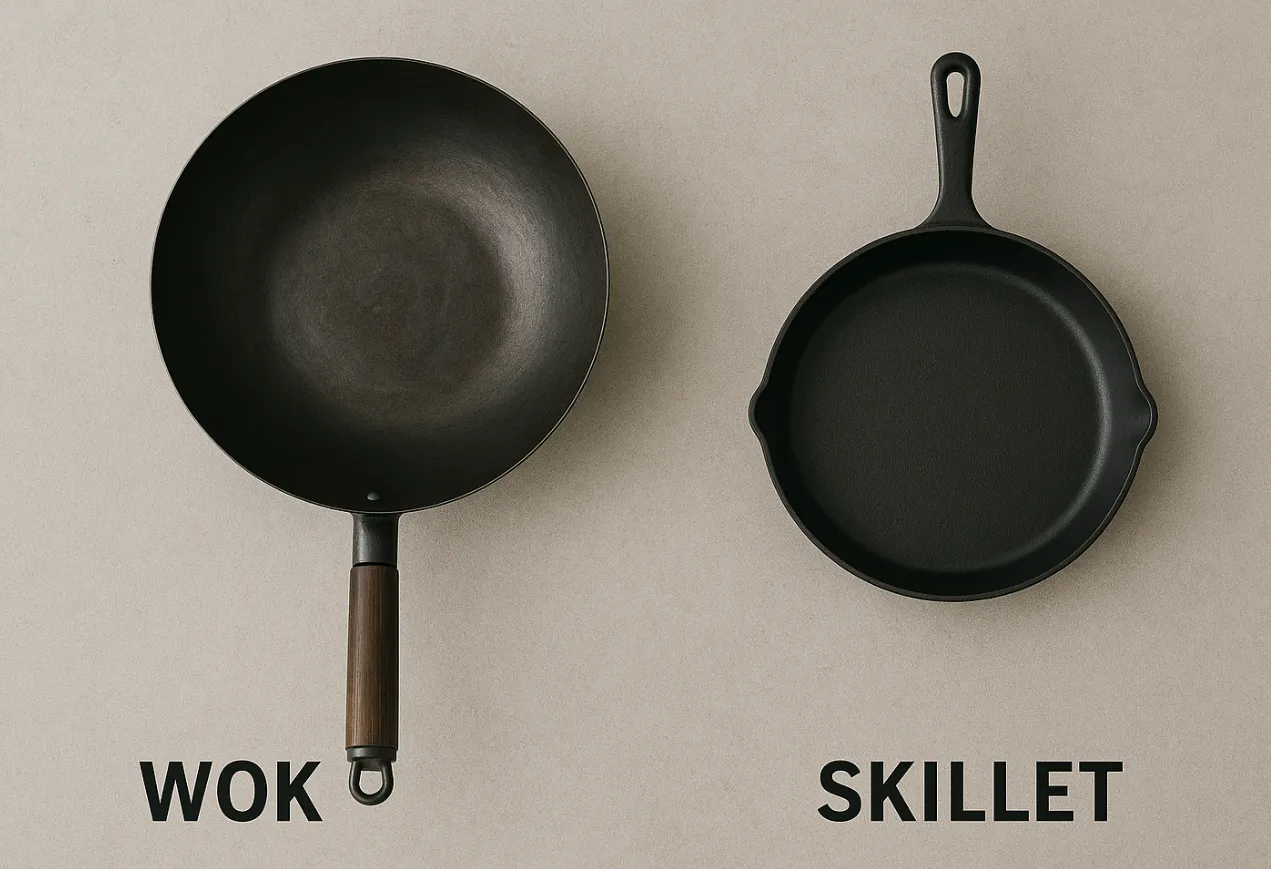
The eternal kitchen question: should you reach for a stir fry pan or a traditional wok? If you've ever stood in your kitchen wondering which vessel will give you that perfect sear, authentic flavor, and restaurant-quality results, you're not alone. This comprehensive guide cuts through the confusion with scientific analysis, expert insights, and real-world testing to help you make the right choice for your cooking style and kitchen setup.
What Exactly Is a Stir Fry Pan vs Wok? Understanding Design & Construction
The Fundamental Shape Difference
The most obvious distinction lies in their geometry. A traditional wok features a deep, rounded bowl shape that concentrates heat at the bottom while creating distinct temperature zones along the sloped sides. This design isn't accidental—it's the result of centuries of evolution to maximize cooking efficiency with minimal fuel.
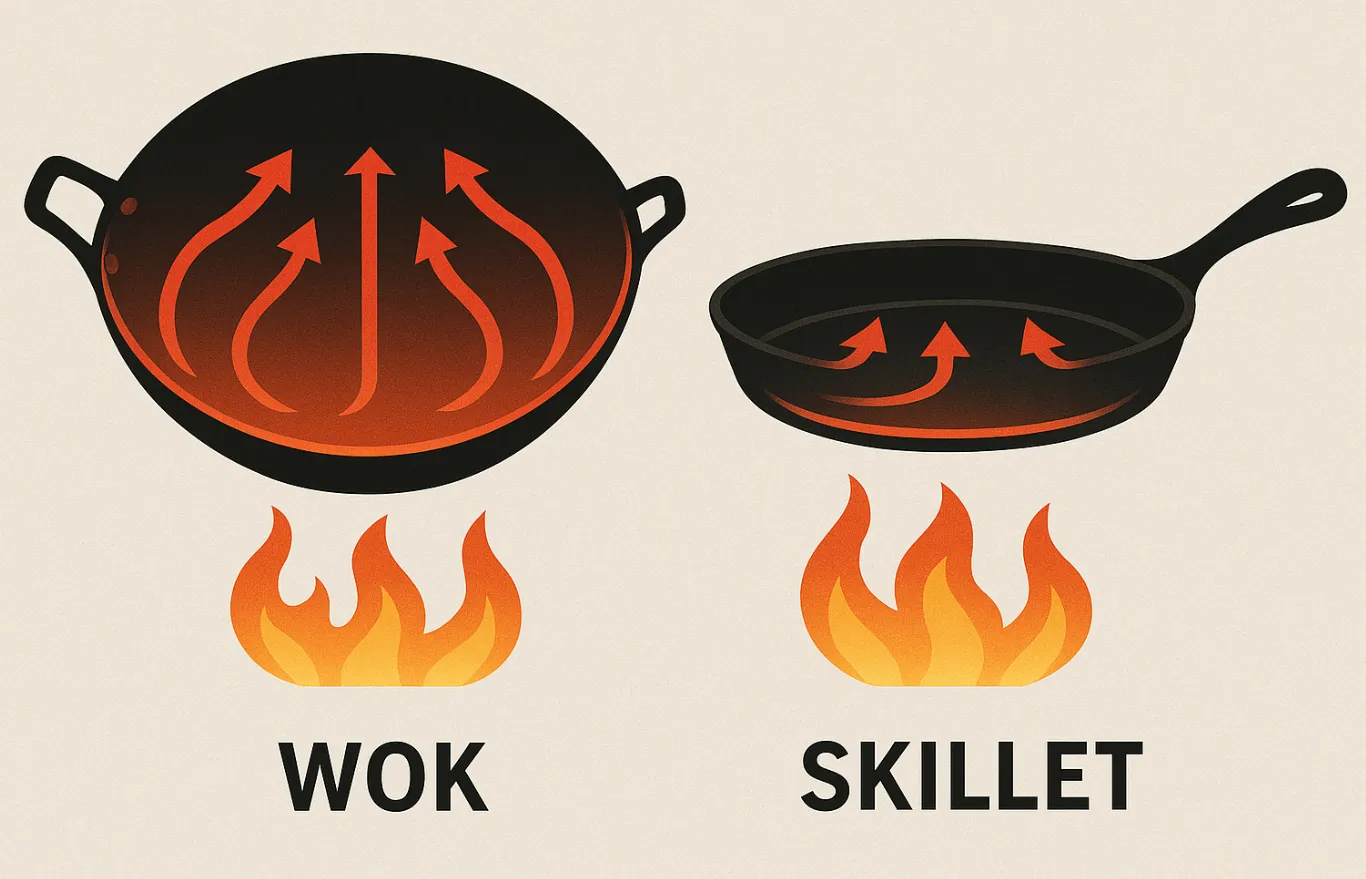
A stir fry pan (essentially a deep skillet) offers a flat cooking surface with gently sloped sides. This Western adaptation provides more even heat distribution across a larger surface area, making it more compatible with standard home burners.
Material Science Behind Superior Performance
Carbon Steel: The Gold Standard Both quality woks and stir fry pans benefit from carbon steel construction. This material offers the perfect balance of heat conductivity, weight, and durability. When properly seasoned, carbon steel develops a natural non-stick surface that improves with use.
Heat Response Characteristics Carbon steel's thin gauge allows for rapid temperature changes—essential for stir-frying where you might need to adjust heat multiple times within minutes. This responsiveness gives you precise control over the cooking process.
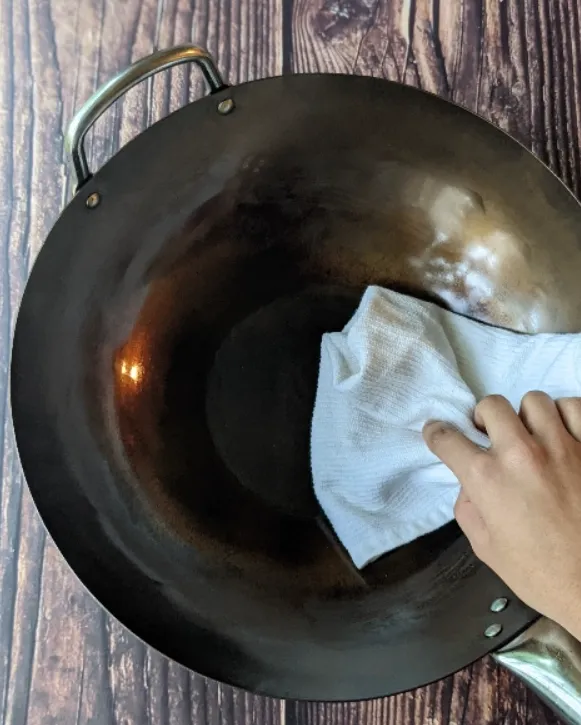
The Capacity and Containment Factor
The wok's high, sloped walls provide superior food containment during the vigorous tossing that defines proper stir-frying. You can cook larger quantities without spillage, and the shape naturally keeps ingredients moving through different heat zones.
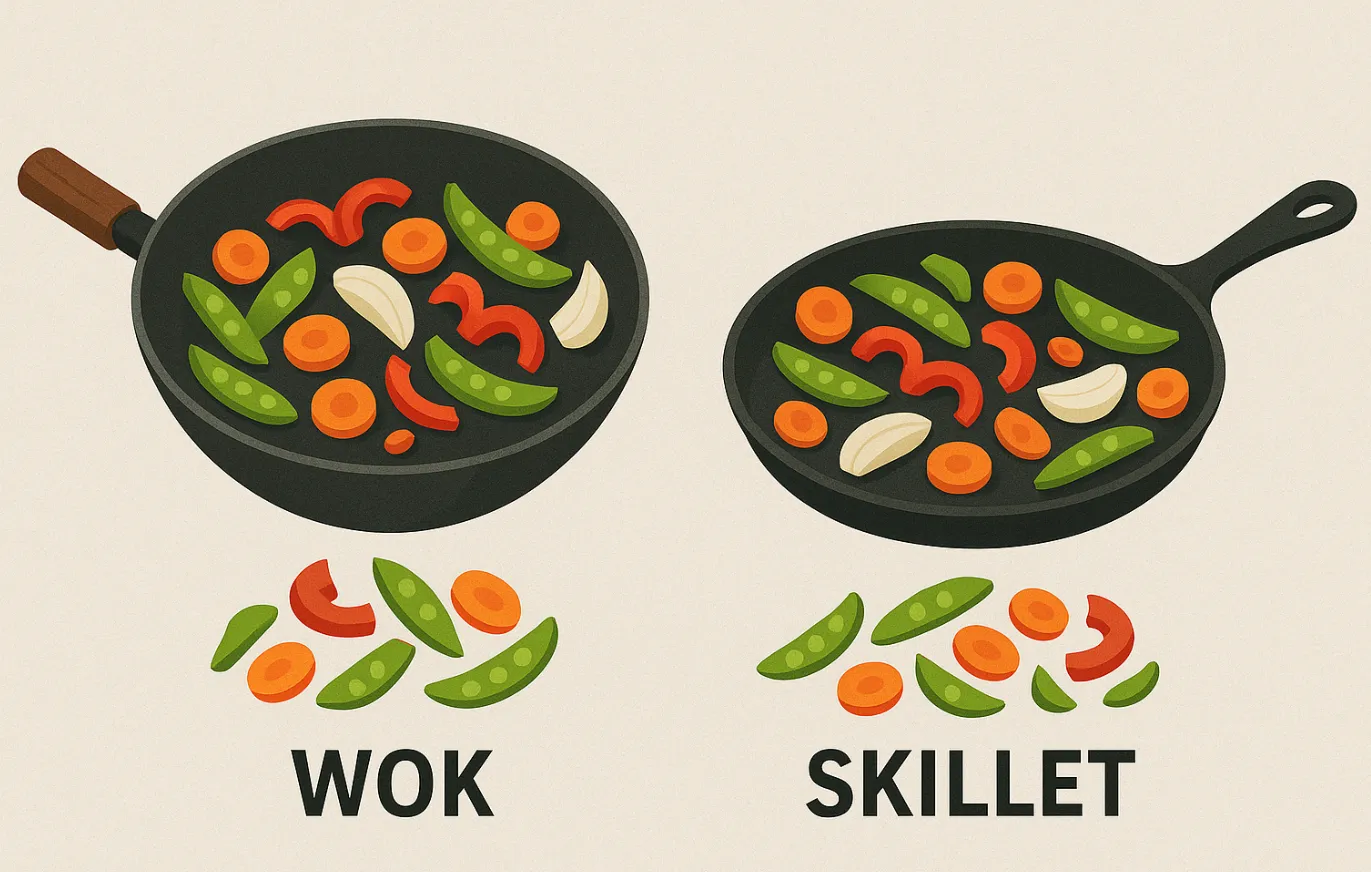
The Great Debate: Which Is Better for Stir Frying?
The Science Speaks: Expert Analysis
{{< youtube 2KNlXt0u_5o 120 "Carbon steel wok transfers flavor to food through black oxide, creating immediate and obvious taste differences compared to stainless steel" >}}
Food scientist J. Kenji López-Alt's research reveals that carbon steel woks create distinct flavor compounds through their seasoned surface. The black oxide layer doesn't just provide non-stick properties—it actively transfers flavor to your food, creating taste differences that are "immediate and obvious" when compared side-by-side with other materials.
The Tossing Advantage
Traditional stir-frying should really be called "toss-frying." The wok's shape enables the signature tossing motion that keeps food in constant motion through different temperature zones. This technique promotes better moisture evaporation and prevents steaming, which is the enemy of proper stir-frying.
When Woks Excel: The Ideal Scenarios
Woks demonstrate clear superiority in several key areas:
High-Heat Cooking: The concentrated heat zone at the bottom reaches temperatures well beyond most home pans, enabling proper searing and the development of wok hei (the breath of the wok).
Large Batch Cooking: The generous capacity allows you to cook family-sized portions without overcrowding, which would otherwise lead to steaming instead of frying.
Traditional Techniques: For authentic Asian cooking methods, particularly those requiring constant tossing and mixing, the wok's design has no substitute.
The Stir Fry Pan's Counter-Arguments
Modern stir fry pans address several practical concerns:
Heat Distribution: The larger flat surface area provides more even heating across the entire cooking surface, reducing hot spots.
Stability: Flat-bottom pans sit securely on all stove types without additional equipment.
Ease of Use: The familiar shape requires less technique adaptation for Western cooks.
Can You Stir Fry Without a Wok? The Reality Check
Real-World Experience: 3 Months Without a Wok
{{< youtube -P0ubfh4e-c 45 "Living in a tiny Hong Kong apartment with only a small frying pan, stir-frying for three months until getting a wok revealed what a difference it makes" >}}
Professional chef Tak Jong's honest assessment from his Hong Kong apartment experiment provides valuable insight. For three months, he used only a 12-inch cast iron skillet for all his stir-frying needs. His conclusion? "You can absolutely stir fry in a frying pan, you just have to make some adjustments."
The Practical Adjustments Required
Batch Size Limitations: Smaller quantities work better in pans to avoid overcrowding and subsequent steaming.
Tool Adaptations: Tongs work better than traditional wok spatulas on flat surfaces, as wok spatulas are designed for curved surfaces.
Technique Modifications: Instead of tossing, you rely more on constant stirring and flipping motions.
When Pans Actually Work Well
For certain applications, a good stir fry pan can be nearly equivalent to a wok:
- Small household cooking (1-2 people)
- Dishes with minimal liquid where steaming isn't a major concern
- Beginners who need to focus on timing and ingredient prep rather than advanced techniques
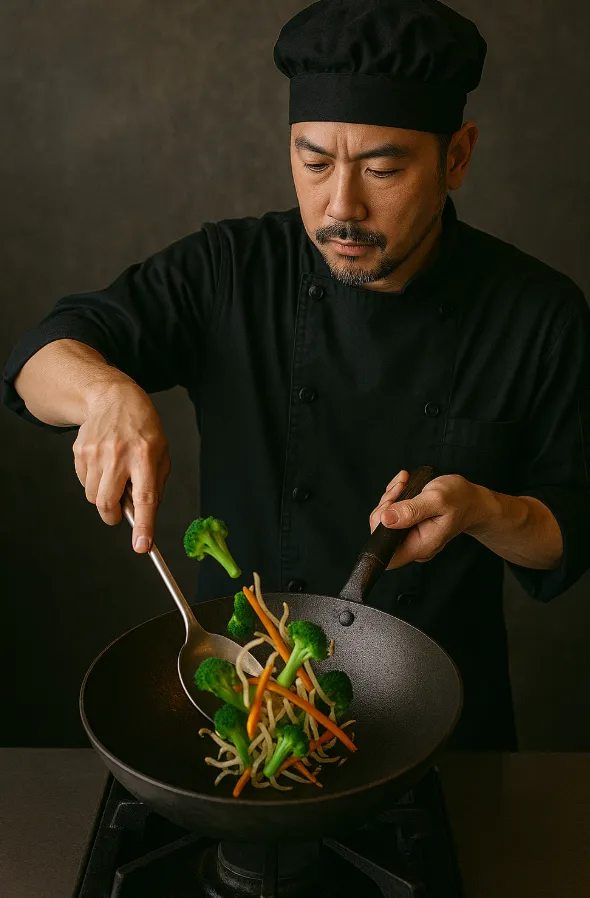
Electric Stove Users: Your Best Options
The Electric Stove Challenge
{{< youtube 3kdkPUmrc20 240 "Electric and induction stovetops struggle to heat wok sides effectively, but solutions include portable butane burners or torch heads for proper seasoning" >}}
Electric stoves present unique challenges for wok cooking. The flat heating element can only effectively heat the bottom portion of a round-bottom wok, leaving the sides relatively cool. This limitation affects both cooking performance and wok seasoning.
Flat-Bottom Wok Solutions
For electric stove users, flat-bottom woks offer the best compromise:
Maximum Contact: The flat base ensures full contact with the heating element, improving heat transfer efficiency.
Stability: No wobbling or need for additional support rings.
Versatility: Can function as both a wok and a large skillet when needed.
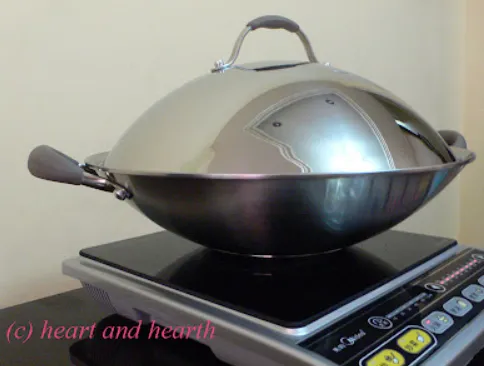
Alternative Solutions for Serious Cooks
Portable Butane Burners: High-output portable burners (up to 15,000 BTU) can provide wok-appropriate heat levels for outdoor use.
Induction Compatibility: Modern induction cooktops with boost functions can achieve impressive heat levels with appropriate flat-bottom woks.
Hybrid Approach: Use your electric stove for most cooking and invest in a portable outdoor burner for serious wok sessions.
Cooking Performance: Heat, Oil, and Technique Comparison
The BTU Reality Check
{{< youtube cpoSvprBJpE 60 "Chinese restaurant burners produce 50,000-160,000 BTU while home gas burners typically generate only 12,000 BTU or less" >}}
The heat differential between professional and home kitchens is staggering. Restaurant wok burners operate at 50,000-160,000 BTU, while typical home gas burners max out around 12,000 BTU. This gap affects everything from cooking speed to flavor development.
Oil Behavior and Temperature Management
The Hot Wok, Cold Oil Principle: Both woks and stir fry pans benefit from proper preheating before oil addition. However, woks' concentrated heat zones can push oil beyond smoke points more quickly, requiring precise timing.
Oil Distribution: Woks naturally pool oil at the bottom, requiring less total oil for effective coating. Flat pans need more oil to coat the entire surface adequately.
Achieving Wok Hei at Home
The elusive "breath of the wok" can be approximated in both vessels:
Traditional Method: Extremely high heat with proper oil vaporization and flame interaction.
Home Adaptations: Focus on maximum heat, minimal moisture, and proper ingredient sequencing rather than trying to replicate restaurant BTU levels.
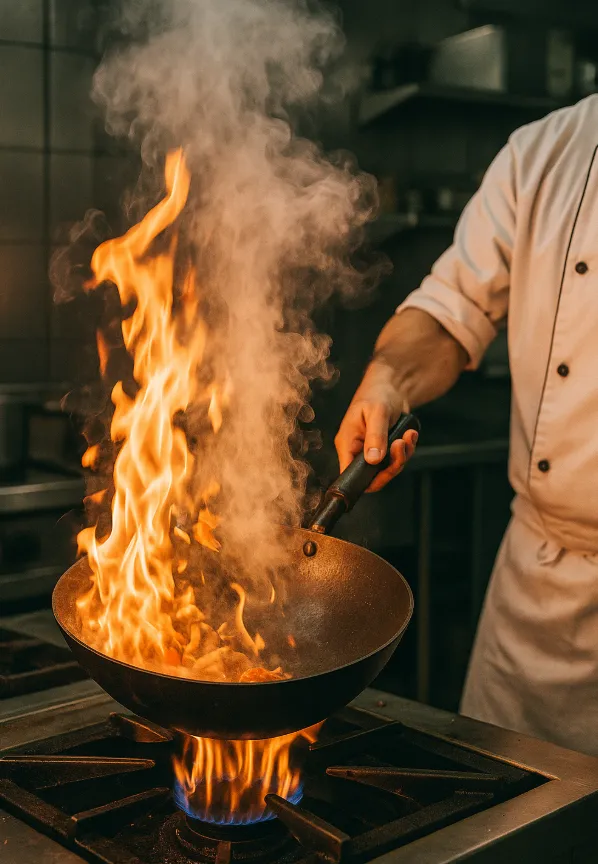
Specific Food Showdowns: Fried Rice, Vegetables & Meat
The Fried Rice Test: A Cultural Perspective
{{< youtube 53me-ICi_f8 180 "Using a colander to drain rice and then adding water ruins the rice - proper fried rice technique requires day-old rice and proper wok heat" >}}
The viral Uncle Roger BBC critique illuminates why technique matters more than equipment. Poor rice preparation and incorrect heat management will fail regardless of whether you use a wok or pan. However, the comparison with Gordon Ramsay's wok technique shows how proper equipment enhances results.
{{< youtube FrUfwpaNNIM 300 "Gordon Ramsay's proper wok technique with two woks, high heat, and correct tossing creates so much wok hei - this demonstrates restaurant-quality home cooking" >}}
Vegetable Stir-Frying: Where Woks Shine
Moisture Management: Vegetables release significant moisture during cooking. Woks' design promotes rapid evaporation, while flat pans can lead to steaming if overcrowded.
Even Cooking: The constant motion possible in a wok ensures all vegetables receive equal heat exposure, preventing some pieces from overcooking while others remain raw.
Protein Considerations
Meat Preparation: Both vessels benefit from proper meat preparation techniques like velveting, but woks' temperature zones allow for better heat control during protein cooking.
Searing Capability: While both can achieve good sears, woks' concentrated heat zones can create superior browning when properly managed.
Pros and Cons: The Complete Breakdown
Wok Advantages
- Superior heat concentration for authentic stir-frying
- Excellent food containment during vigorous cooking
- Traditional versatility for steaming, deep-frying, and braising
- Flavor development through seasoned surfaces
- Large capacity for family-sized portions
Wok Disadvantages
- Requires technique mastery for optimal results
- Stove compatibility issues with electric and flat-top ranges
- Storage challenges due to size and shape
- Learning curve for proper heat management
Stir Fry Pan Advantages
- Universal compatibility with all stove types
- Familiar handling for Western cooking techniques
- Even heat distribution across cooking surface
- Easier maintenance and storage
- Beginner-friendly operation
Stir Fry Pan Disadvantages
- Limited capacity for large batches
- Reduced authenticity for traditional Asian techniques
- Less versatile for non-stir-frying applications
- Potential for overcrowding and subsequent steaming
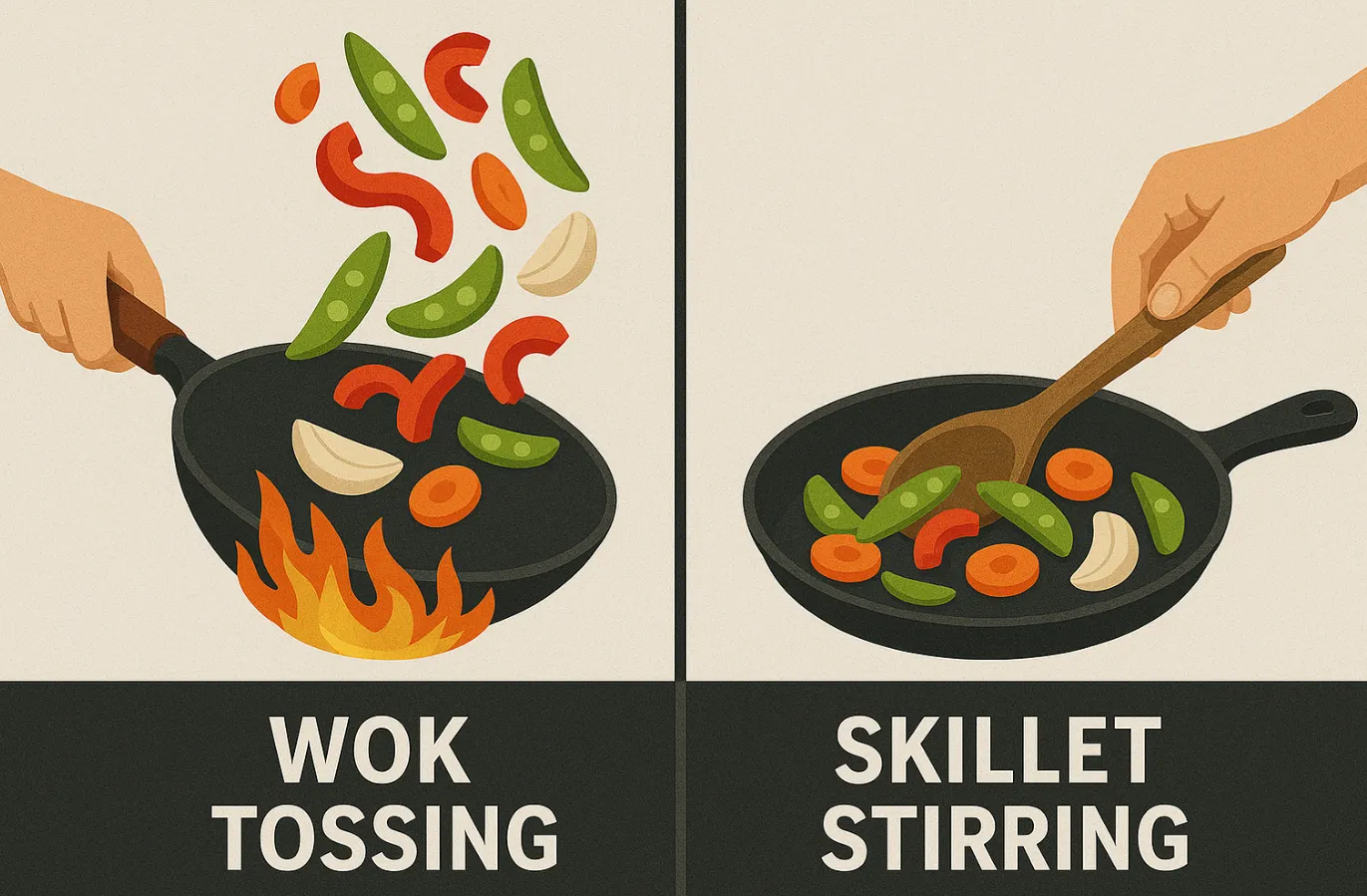
Storage, Maintenance & Long-term Considerations
Seasoning Science: Wok vs Pan Differences
{{< youtube 3kdkPUmrc20 480 "Wok seasoning differs from Western skillets due to temperature differentials - bottom expands more than sides, making polymer buildup difficult" >}}
Wok maintenance requires understanding the unique thermal dynamics. Unlike Western skillets that heat evenly, woks create temperature differentials that make traditional polymer seasoning layers unstable. This is why wok seasoning is more of a "per-use" process rather than building permanent layers.
Daily Care Requirements
Immediate Cleaning: Both benefit from cleaning while still warm, but woks require more attention to prevent rust in the transition zones between seasoned and raw metal. For comprehensive care instructions, see our complete wok cleaning guide.
Drying Practices: Complete moisture removal is crucial for both, but woks' shape can trap water in corners if not properly dried.
Storage Solutions: Woks require more creative storage solutions due to their size and shape, while stir fry pans stack conventionally.
Long-term Durability
Quality carbon steel woks and pans can last decades with proper care. However, woks often develop more character and improved performance over time as their seasoning adapts to your cooking style.
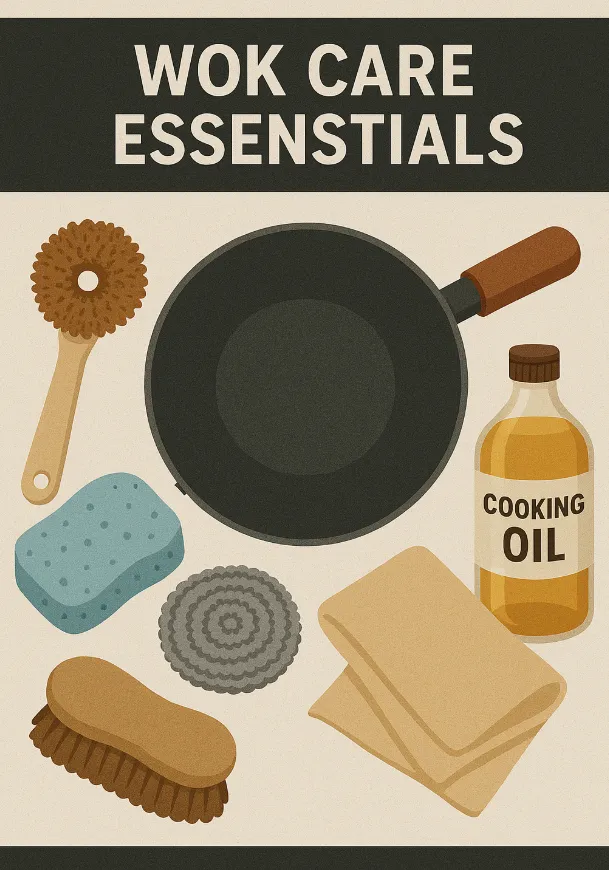
Cost Analysis: Value for Money
Initial Investment Comparison
Quality Woks: Range from $30-200+ depending on size, material, and origin Stir Fry Pans: Generally $25-150 for comparable quality levels
Total Cost of Ownership
Consider additional equipment needs:
Wok Accessories: Potential wok ring ($15-30), specialized spatulas ($10-25), spider strainers ($15-40)
Pan Accessories: Usually compatible with existing kitchen tools
Return on Investment
A quality wok's versatility—capable of stir-frying, steaming, deep-frying, braising, and smoking—can replace multiple specialized pans, potentially offering better long-term value.
The Japanese Perspective: Chukanabe Value
In Japanese cooking culture, the chukanabe (Japanese-style wok) represents a middle ground—combining wok advantages with adaptations for modern kitchens. For those considering authentic Japanese woks, our comprehensive Japanese wok brands guide covers everything from traditional Yamada Kogyosho artisan workshops to modern Yoshikawa innovations.
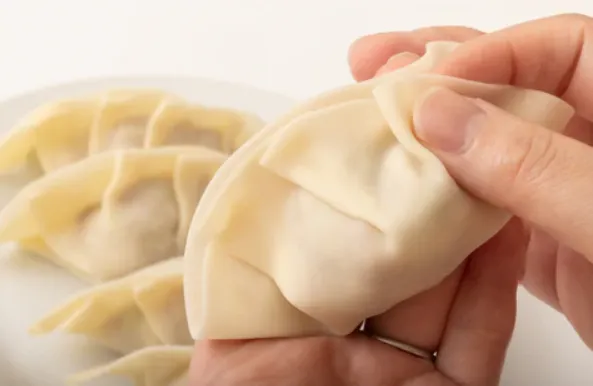
The Verdict: Which Should You Choose?
Choose a Wok If You:
- Cook for families or larger groups regularly
- Want authentic Asian cooking results and are willing to learn proper techniques
- Have gas cooking or plan to use outdoor burners
- Value versatility and want one pan for multiple cooking methods
- Enjoy the learning process and don't mind technique development
Choose a Stir Fry Pan If You:
- Have electric or induction cooking without alternative options
- Prefer familiar cooking methods with minimal technique adaptation
- Cook for 1-2 people most of the time
- Want immediate results without a learning curve
- Have limited storage space for specialized equipment
The Hybrid Approach: Best of Both Worlds
Many serious home cooks eventually acquire both. A flat-bottom wok for authentic technique development and a quality stir fry pan for quick weeknight cooking provides maximum flexibility.
Regional Considerations
Japanese-Style Cooking: Chukanabe offers excellent middle-ground characteristics, combining wok advantages with modern kitchen compatibility.
Korean-Chinese Fusion: The robust cooking style benefits from wok heat concentration for dishes like jajangmyeon and jjamppong.
Vietnamese Techniques: The "drier" stir-frying style works well in either vessel, with technique mattering more than equipment.
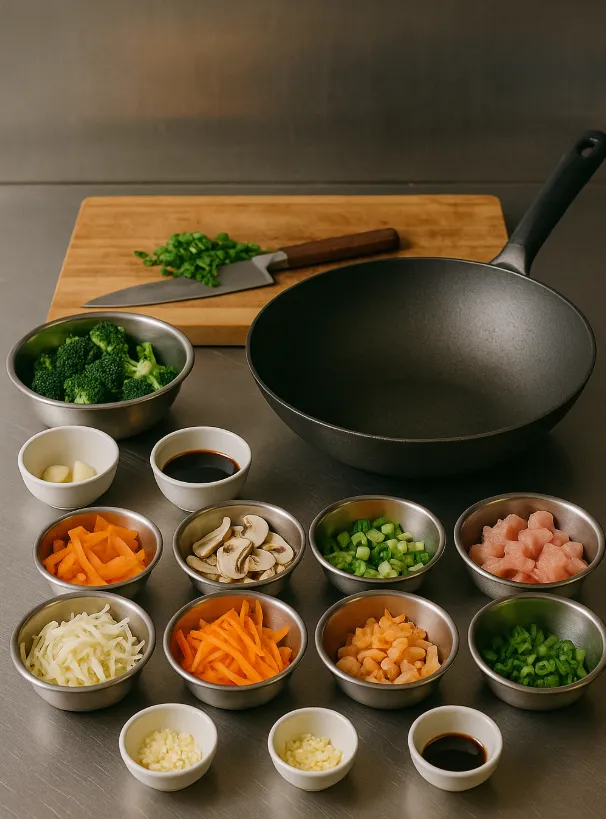
Final Recommendations: Your Next Steps
For Beginners: Start Smart
- Assess your stove type honestly—don't fight your equipment
- Consider a flat-bottom carbon steel wok as the best compromise
- Focus on technique fundamentals before worrying about equipment perfection—check our beginner's wok cooking guide
- Invest in proper mise en place habits—this matters more than your pan choice
For Intermediate Cooks: Upgrade Strategically
- Evaluate your current limitations—is technique or equipment holding you back?
- Consider specialized equipment like outdoor burners for serious wok cooking
- Experiment with regional styles to broaden your culinary perspective
For Advanced Practitioners: Optimize Your Arsenal
- Multiple vessels for different applications maximize your capabilities
- High-quality accessories enhance technique execution
- Continuous learning through cultural exploration and technique refinement
The choice between a stir fry pan and wok ultimately depends on your cooking goals, kitchen setup, and willingness to adapt techniques. Both can produce excellent results when used properly, but understanding their strengths and limitations ensures you choose the tool that best serves your culinary journey.
Remember: great stir-frying comes from understanding heat, timing, and ingredient preparation. Master these fundamentals, and either vessel will serve you well in creating delicious, restaurant-quality meals at home.
Comments
Post a Comment